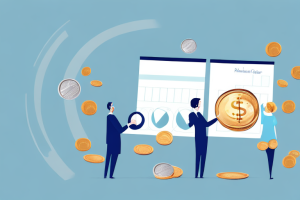Retirement is a time in our lives that we all look forward to. It’s a time to relax, enjoy our hobbies, and spend quality time with our loved ones. But what happens when your retirement savings are not growing as you had hoped? In this article, we will explore the various factors that may be impacting your retirement savings and provide you with strategies to maximize your retirement growth potential.
Understanding the factors impacting your retirement savings
When it comes to retirement savings, there are several factors that can have a significant impact on its growth. One common factor is the rate of return on your investments. If your investments are not generating the desired returns, it can greatly hinder the growth of your retirement funds. Additionally, the amount of contributions you make to your retirement accounts also plays a crucial role. The more you contribute, the faster your retirement savings will grow.
Another factor to consider is inflation. Over time, the purchasing power of your retirement funds can be eroded by inflation. It’s important to take into account the impact of inflation when calculating how much you will need for retirement. Furthermore, market volatility can also slow down the growth of your retirement savings. Fluctuations in the market can result in losses, which can be detrimental to your retirement goals.
The impact of fees and expenses on your retirement funds should not be overlooked. High fees and expenses can eat into your returns, reducing the overall growth of your retirement savings. It’s essential to carefully review the fees and expenses associated with your retirement accounts and consider alternative options if necessary.
One often overlooked factor that can impact your retirement savings is your health. Medical expenses can be a significant drain on your retirement funds, especially if you encounter unexpected health issues or require long-term care. It’s important to factor in potential healthcare costs when planning for retirement and consider purchasing adequate health insurance or long-term care insurance to mitigate these expenses.
Additionally, the timing of your retirement can also affect the growth of your savings. If you retire during a market downturn, you may be forced to sell investments at a loss or withdraw funds when the market is performing poorly. On the other hand, retiring during a bull market can provide a boost to your retirement savings. It’s important to carefully consider the timing of your retirement and consult with a financial advisor to ensure you make the most of favorable market conditions.
Common mistakes that hinder retirement growth
In addition to the various factors mentioned above, there are also common mistakes that individuals make that hinder the growth of their retirement funds. One such mistake is not starting to save for retirement early enough. The earlier you start saving, the more time your money has to grow and compound. Delaying retirement savings can put a significant dent in your future funds.
Another common mistake is not diversifying your investments. Putting all your eggs in one basket, so to speak, can be risky. By diversifying your investments across different asset classes, you can spread out the risk and potentially increase your chances of higher returns. It’s important to consult with a financial advisor to determine the best diversification strategy for your specific goals and risk tolerance.
Additionally, failing to increase contributions over time can also hinder the growth of your retirement funds. As your income increases, it’s crucial to adjust your contributions accordingly. By steadily increasing your contributions, you can accelerate the growth of your retirement savings and make up for any lost time.
One more mistake that can hinder retirement growth is not taking advantage of employer matching contributions. Many employers offer matching contributions to their employees’ retirement accounts, up to a certain percentage of their salary. Failing to take advantage of this free money is essentially leaving potential growth on the table. It’s important to contribute enough to your retirement account to maximize the employer match and take full advantage of this benefit.
Lastly, another common mistake is underestimating healthcare costs in retirement. Medical expenses can be a significant burden during retirement, especially as you age and require more healthcare services. Failing to account for these costs in your retirement planning can lead to financial strain and potentially deplete your retirement funds faster than anticipated. It’s important to factor in healthcare costs and consider purchasing long-term care insurance or other healthcare coverage options to protect your retirement savings.
Strategies to maximize your retirement growth potential
Now that we’ve discussed the various factors and common mistakes that can hinder your retirement growth, let’s explore some strategies to maximize your retirement growth potential. One effective strategy is to regularly review and reassess your retirement goals. As life circumstances change, it’s important to adjust your goals accordingly. By evaluating your retirement goals and making any necessary adjustments, you can ensure that you are on track for optimal growth.
Another strategy is to explore alternative investment options. While traditional investment vehicles such as stocks and bonds can certainly play a role in growing your retirement savings, there may be other investment options that can provide accelerated growth. Real estate, for example, has the potential to generate both cash flow and appreciation over time. It’s important, however, to thoroughly research and understand the risks associated with any alternative investments.
Evaluating the performance of different retirement investment vehicles is also crucial. Not all retirement accounts are created equal, and it’s important to evaluate which accounts are most suitable for your goals. Traditional IRAs, Roth IRAs, and 401(k) plans all have their unique advantages and disadvantages. Understanding the features and benefits of each account can help you make informed decisions and maximize your retirement growth potential.
One additional strategy to maximize your retirement growth potential is to diversify your investment portfolio. By spreading your investments across different asset classes, such as stocks, bonds, and real estate, you can reduce the risk of losing all your savings in case one investment performs poorly. Diversification allows you to take advantage of different market conditions and potentially increase your overall returns.
Furthermore, taking advantage of employer matching contributions can significantly boost your retirement savings. If your employer offers a matching contribution program, make sure to contribute enough to receive the maximum match. This essentially means that your employer will contribute a certain percentage of your salary to your retirement account, effectively giving you free money. By maximizing employer matching contributions, you can accelerate the growth of your retirement savings without any additional effort.
Addressing financial setbacks and their impact on retirement growth
Financial setbacks are an unfortunate reality for many people. Whether it’s a job loss, unexpected medical expenses, or a major economic downturn, these setbacks can significantly impact the growth of your retirement funds. It’s important to have a plan in place to address these setbacks and mitigate their impact.
An emergency fund can be a crucial tool in times of financial uncertainty. By having a separate fund set aside for emergencies, you can avoid tapping into your retirement savings and keep your long-term growth intact. It’s recommended to have at least three to six months’ worth of living expenses saved in your emergency fund.
Another way to address financial setbacks is to adjust your spending habits. By cutting back on discretionary expenses and focusing on essential needs, you can free up more money to bolster your retirement savings. It may require some sacrifices in the short term, but the long-term benefits will be well worth it.
Additionally, seeking professional financial advice can be beneficial when facing financial setbacks. A financial advisor can help you assess your situation, develop a personalized plan, and provide guidance on how to navigate through the challenges. They can offer strategies to optimize your retirement savings and help you make informed decisions.
Furthermore, exploring alternative sources of income can help mitigate the impact of financial setbacks on your retirement growth. This could include taking on a part-time job, freelancing, or starting a small business. By diversifying your income streams, you can create a more stable financial foundation and continue to contribute to your retirement savings even during difficult times.
Expert advice on building a solid foundation for long-term retirement growth
Seeking expert advice can be invaluable when it comes to building a solid foundation for long-term retirement growth. A financial advisor can assess your current financial situation, help you set realistic retirement goals, and create a personalized plan to achieve them. They can provide guidance on which investments are best suited for your risk tolerance and offer strategies to optimize your retirement growth potential.
In addition to seeking professional advice, staying informed and educated about personal finance and retirement planning is essential. There are countless resources available, from books and online articles to financial podcasts and webinars. By staying up to date with the latest trends and developments, you can make informed decisions about your retirement savings and ensure that your funds continue to grow.
Another important aspect of building a solid foundation for long-term retirement growth is managing your expenses and budget effectively. It’s crucial to track your spending, identify areas where you can cut back, and prioritize saving for retirement. Creating a budget and sticking to it can help you allocate your income towards retirement savings and ensure that you are on track to meet your goals.
Exploring the benefits and risks of leveraging debt for accelerated retirement savings
Leveraging debt can be a controversial topic when it comes to retirement savings. While it may seem counterintuitive to take on debt to grow your retirement funds, there are instances where it can be beneficial. For example, taking out a low-interest loan to invest in income-producing assets such as rental properties or dividend-paying stocks can potentially accelerate your retirement savings.
However, it’s crucial to consider the risks involved. Taking on debt always comes with a certain level of risk, and if the investments do not perform as expected, you could find yourself in a precarious financial situation. It’s important to carefully assess your risk tolerance, consult with a financial advisor, and thoroughly research any investment opportunities before leveraging debt for accelerated retirement savings.
In conclusion, there are several factors that may be impacting the growth of your retirement savings. Understanding these factors and avoiding common mistakes can greatly improve your chances of achieving your retirement goals. By implementing strategies to maximize your retirement growth potential, addressing financial setbacks, seeking expert advice, and exploring alternative options, you can build a solid foundation for long-term retirement growth. Remember, patience, perseverance, and a well-thought-out plan are key to ensuring that your retirement is not only comfortable but also financially secure.
One important consideration when leveraging debt for accelerated retirement savings is the impact on your credit score. Taking on additional debt can increase your debt-to-income ratio, which may negatively affect your creditworthiness. It’s essential to monitor your credit score regularly and take steps to maintain or improve it, such as making timely debt payments and keeping your credit utilization low.
Another factor to consider is the potential tax implications of leveraging debt for retirement savings. Depending on the type of debt and the investments made, there may be tax advantages or disadvantages. It’s important to consult with a tax professional to understand the tax implications and ensure compliance with applicable tax laws.



